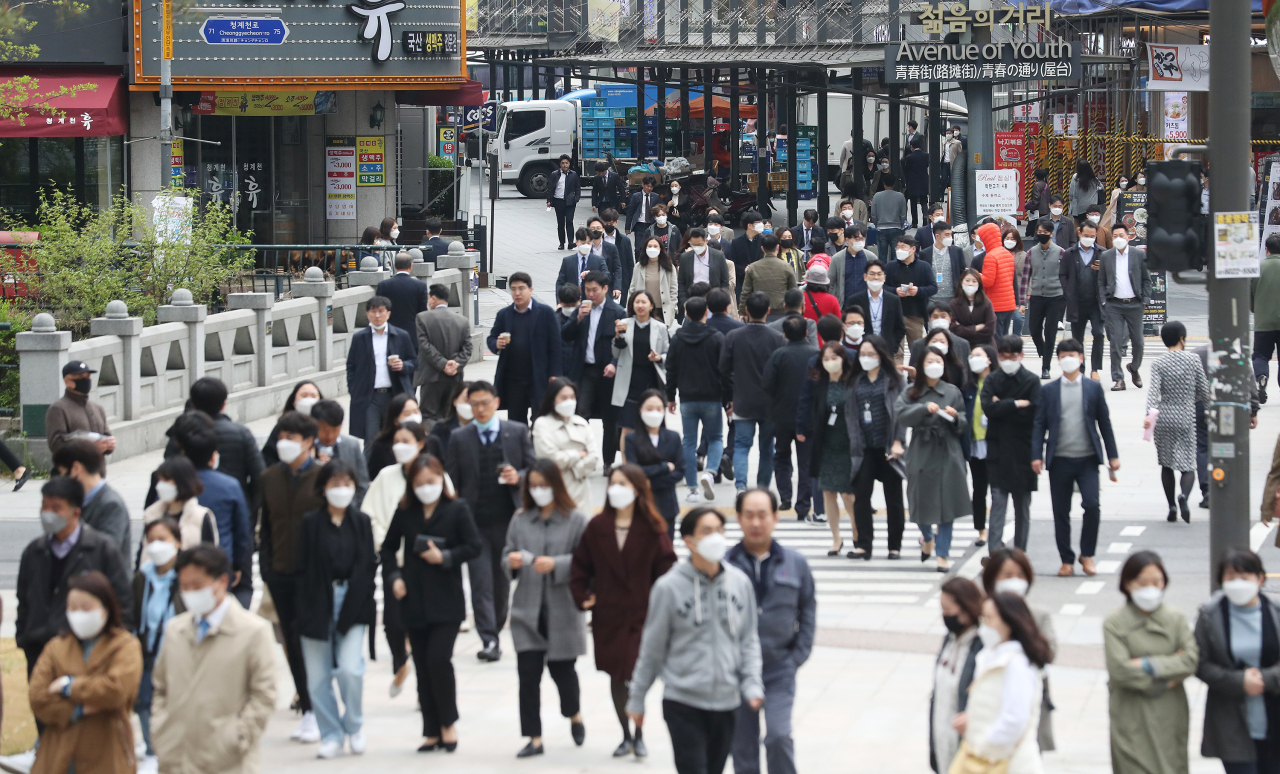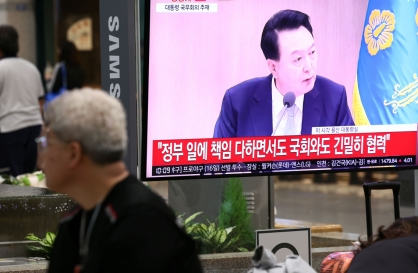Phased distancing gets lost in translation
Social distancing letting up could ruin Korea’s bid for reopening, pundits warn
By Kim ArinPublished : April 21, 2020 - 09:25

South Korea is mulling ways for phasing out physical distancing after a marked slowdown in new infections, with forced closures of some businesses and community spaces lifted starting this week.
Phase one of the timeline for relaxing social distancing, announced Sunday, entails unclosing venues of large gatherings such as places of worship, nightlife businesses and other indoor facilities that have been ordered to shut down for the past month.
If nothing goes wrong, whether Korea could move onto the next phase will be announced May 5.
But the message of a staged process of transitioning from strict distancing toward an economic reopening seems to have gotten lost on the first day of the trial Monday, with some taking the partial easing as a signal for a return to normal life.
A 28-year-old Seoulite who works in advertising said his company had decided to switch back from teleworking to commuting starting this week.
“We’re holding meetings, coffee breaks and team lunches just like before,” he said.
A cafe owner in Siheung, Gyeonggi Province, said she saw a boost in customer turnout akin to “precoronavirus times” over the weekend after a weekslong slump.
A staffer at a nightclub in Itaewon, a Seoul district known for its thriving nightlife scene, said many of the bars, pubs and clubs in the area were opening again.
As for the recommended ventilation, the club was located “in a basement” and the notion was most likely “not viable,” he said.
All of these lapses were problematic, according to preventive medicine specialist Dr. Ki Moran of the National Cancer Center.
Ki, who is on the advisory board for laying down the distancing guidance, stressed that the latest update to the distancing measures did not mean a return to business as usual.
She said the idea that social distancing has been “eased” was a misinterpretation with potentially disastrous consequences.
“Retracting the closedown order for certain venues is the only thing changed. Any place where people gather and have contact is still advised to limit operations,” she said, adding that adherence to social distancing should continue.
In a press briefing Monday, health officials reiterated the distancing remained in place until further notice, cautioning against a reduced public commitment.
For settings where there is a higher risk of transmission, compliance with safety practices -- such as thermal screening, maintaining 2 meters between people, use of face masks, and regular ventilation and disinfection -- was strongly urged.
Korea’s stringent distancing measures, first implemented nationwide on March 22, have worked, with the number of daily new infections dropping to an eight-week low on Sunday.
But this containment success was “fragile,” infectious disease professor Dr. Kim Woo-joo of Korea University Hospital said, and “great vigilance” over the emerging cases was needed to spot signs of a resurgence.
Because Korea never instituted a lockdown or other measures of similar intensity, its restrictions were already relatively moderate, he said.
“The goal of physical distancing is to reduce the opportunity for transmission, and prevent the health care systems from becoming overwhelmed.”
For clearer public communication, “sustainable social distancing” may be a better term than “routine distancing,” said a Korean Medical Association official, claiming the term coined by the government to refer to partial economic reopening created confusion.
“It’s inevitable social distancing has to go on, but how to allow safe resumption of economic activity is also an important discussion. ‘Sustainable distancing’ better portrays the idea of continuation of the practice,” he said.
By Kim Arin (arin@heraldcorp.com)






![[From the Scene] Monks, Buddhists hail return of remains of Buddhas](http://res.heraldm.com/phpwas/restmb_idxmake.php?idx=644&simg=/content/image/2024/04/19/20240419050617_0.jpg&u=20240419175937)








![[From the Scene] Monks, Buddhists hail return of remains of Buddhas](http://res.heraldm.com/phpwas/restmb_idxmake.php?idx=652&simg=/content/image/2024/04/19/20240419050617_0.jpg&u=20240419175937)

![[KH Explains] Hyundai's full hybrid edge to pay off amid slow transition to pure EVs](http://res.heraldm.com/phpwas/restmb_idxmake.php?idx=652&simg=/content/image/2024/04/18/20240418050645_0.jpg&u=20240419100350)

![[Today’s K-pop] Illit drops debut single remix](http://res.heraldm.com/phpwas/restmb_idxmake.php?idx=642&simg=/content/image/2024/04/19/20240419050612_0.jpg&u=)